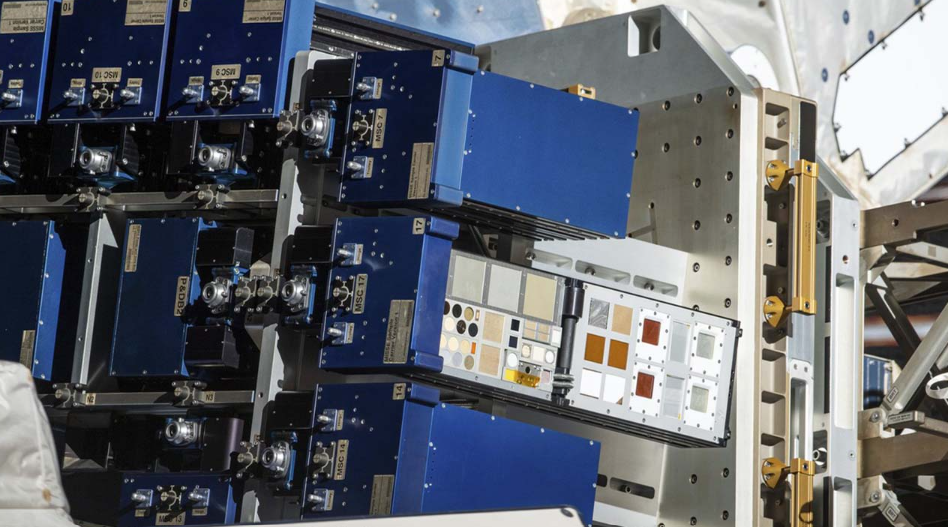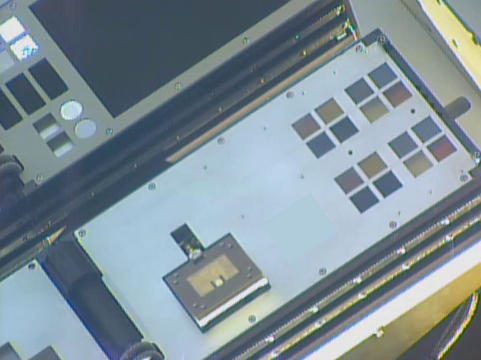US aerospace and defense contractor L3Harris is leveraging the International Space Station (ISS) National Laboratory to test durable materials crucial for satellite component production using 3D printing.
Before 3D printed materials can be trusted for spacecraft components, thorough testing is necessary to ensure their resilience in the harsh environment of low Earth orbit (LEO), according to the company. L3Harris has launched a project to test a 3D printed radio frequency (RF) circuit and various material samples on SpaceX’s 27th Commercial Resupply Services (CRS) mission. This initiative follows a 2021 experiment on the ISS, which provided valuable data over two months. In this iteration, L3Harris is extending its testing to include photonic material for photonic integrated circuits, a technology similar to computer chips but using light instead of electrons.
“We’re excited to test the 3D printed materials for six months and compare the new results with previous ISS experiments and ground tests,” said Arthur C. Paolella, senior scientist and technical fellow with L3Harris, an aerospace and defense industry leader. “The ability to 3D print materials for use in space opens up new possibilities for satellite design and construction while making spacecraft manufacturing more cost-effective and efficient.”

Optimizing materials through in-space performance testing
Eduardo Rojas, director of the Wireless Devices and Electromagnetics Laboratory at Embry Riddle Aeronautical University, along with his students, is assisting with this venture. Managed by ISS National Lab Commercial Service Provider Aegis Aerospace and affixed to the ISS exterior, the experiment will utilize the MISSE Flight Facility. Exposed to the rigors of space, the material samples will undergo various stressors, including extreme temperatures and radiation, to evaluate their performance under conditions similar to those experienced by satellites.
Paolella stated that the results obtained from these tests will guide the refinement and development of materials for integration into satellite manufacturing processes. Moreover, using photonic integrated circuits holds promise for enhancing satellite communications by potentially reducing size, weight, and power requirements while increasing data transmission capabilities. L3Harris is exploring additional applications for 3D printed materials in space, such as in-orbit manufacturing and repair, beyond satellite components. These efforts highlight a concerted effort to leverage advanced technologies to improve space exploration and satellite technology.
“While we can test the durability of these materials on Earth against one or two of these factors at a time, on the ISS, we can test every potential hazard—and all at once,” Paolella said.

Novel developments in space manufacturing
The use of 3D printing for space manufacturing has picked up a significant pace in the past few months. One of the recent examples includes the Metal3D project, developed by AddUp in alliance with Airbus Defence & Space under a European Space Agency (ESA) contract, which introduced a metal 3D printer for space applications. Co-funded by Airbus, this printer aims to evaluate additive manufacturing in sustained microgravity.
Launched to the ISS by NASA Mission NG-20, it will undergo testing in the Columbus module. According to Airbus, the operational printing was expected in late February or early March. Airbus highlights the potential of in-space manufacturing to reduce reliance on Earth-based supply chains. The experiment aims to assess the quality of metal printing in space and inform future extraterrestrial missions.
Last year, Orbital Composites secured a $1.7 million U.S. Space Force contract to advance In-space Servicing, Assembly, and Manufacturing (ISAM) antennas. Collaborating with industry giants like Axiom Space and Northrop Grumman, the team aimed to transform Satellite-Based Cellular Broadband and Space-Based Solar Power. The company planned to launch its first Space Factory module and establish an ISAM “laboratory” on Axiom Station. With plans for expansion into Geostationary Orbit, Orbital also partnered with Space Logistics to refine ISAM capabilities for GEO applications.
What 3D printing trends do the industry leaders anticipate this year?
What does the Future of 3D printing hold for the next 10 years?
To stay up to date with the latest 3D printing news, don’t forget to subscribe to the 3D Printing Industry newsletter or follow us on Twitter, or like our page on Facebook.
While you’re here, why not subscribe to our Youtube channel? Featuring discussion, debriefs, video shorts, and webinar replays.
Are you looking for a job in the additive manufacturing industry? Visit 3D Printing Jobs for a selection of roles in the industry.
Featured image shows the Materials International Space Station Experiment (MISSE) Flight Facility on the exterior of the space station exposes materials to the harsh environment of space. Image via NASA.



